Our Blog - Rome, January 2007
We went to Rome in January 2007. It was still a little chilly and damp. However, despite the poor weather, it was still a very enjoyable trip. There were plenty of interesting things to see and the food was excellent. It is amazing when you go around the city to see the ruins from 2000 years ago. There are those that are in large groups, like the forum and colosseum area, but then just going around the city, you'll "bump into" something on its' own. They are trying to build another metro line, but unfortunately, there are ruins everywhere under the city. So by tunneling around underground, they could be disturbing ancient buildings.

At the top of Sant'Angelo Castle is this statue of Saint Michael. Sant'Angelo Castle was originally built as the tomb of Emperor Hadrian in the 2nd century AD. It was later converted into a fortress as a refuge for Popes during turbulent times.

The Arch of Constantine built in the 4th century AD is the best preserved of Rome's triumphal arches. It celebrates Constantine's victory over Maxentius at the Milvan Bridge. Shortly after this victory Constantine decreed that Christianity was a lawful religion and should be tolerated throughout the empire.

The famous Colosseum as seen from the outside. The Colosseum was inaugurated in AD 80 with a program of games that lasted 100 days. It takes its name from a colossal 118 foot statue of Nero that once stood nearby. It was used for nearly 500 years with the last recorded games held as late as the 6th century.

A view of the interior of the Colosseum showing the different level of seats. At full capacity the Colosseum could hold over 50,000 spectators. They were seated in a tiered arrangement that reflected the stratified nature of Roman society.

Another view of the Colosseum's interior, this time focused on the area below the original floor. Beneath the sand covered floor was a two level network of tunnels and cages where gladiators and animals were held before the contests began.

Finally one last picture of the Colosseum, again from the outside. Much like modern stadiums, the Colosseum had numbered entrances for the people to gain access inside. Each person had a numbered ticket indicating where they should enter. In this picture you can still see after more than a thousand years the number 52 above one of the entrances.
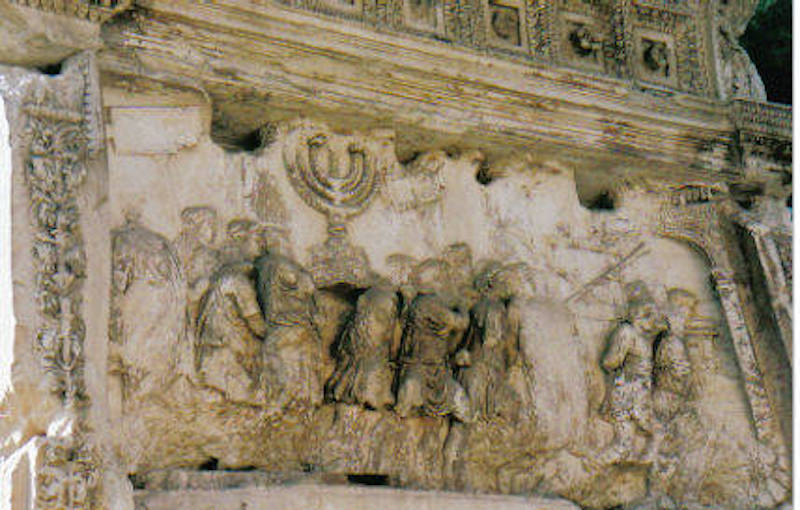
The Arch of Titus was built to commemorate Titus conquest of Judea in the Jewish wars in 66-70 AD. The scene in this photo depicts the procession of the Romans with booty from the war, most prominently the Menorah.
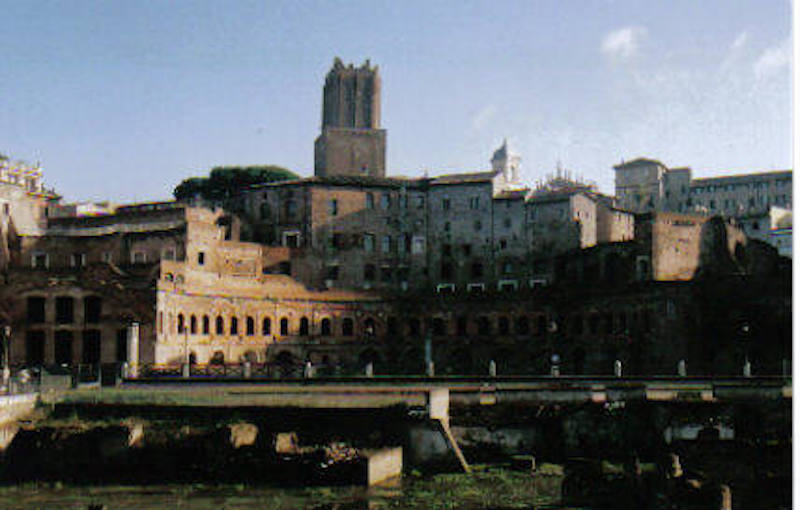
Inside the Forum of Trajan are a complex of brick buildings called the Markets of Trajan. Built early in the 2nd century AD these buildings housed shops, warehouses and taverns.
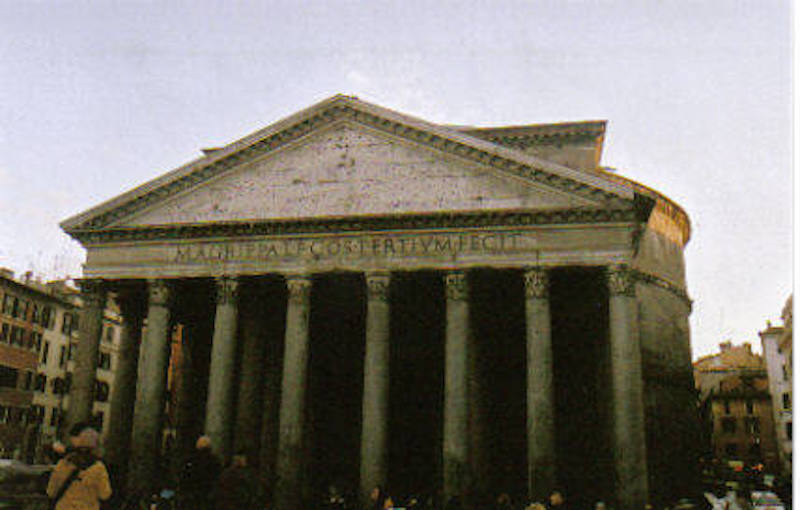
This building is the famous Pantheon, originally built between 27 and 25 BC by Marcus Agrippa (whose name can be seen on the facade). It was later rebuilt in 125 AD by emperor Hadrian when the gigantic 140 foot diameter dome was added. Inside the building the distance between the floor and the top is equal to the diameter, creating a perfect sphere.
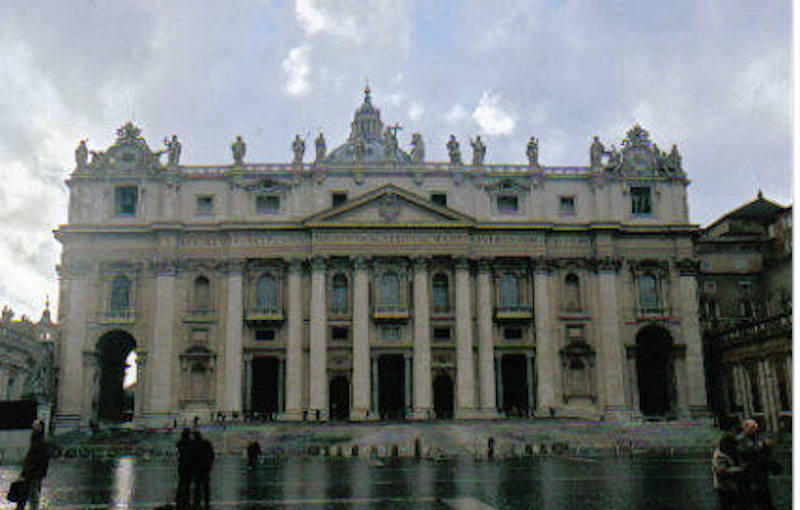
An exterior view of St. Peter's Basilica from St. Peter's Square. This picture does not give any indication of how huge the interior of the Basilica really is.
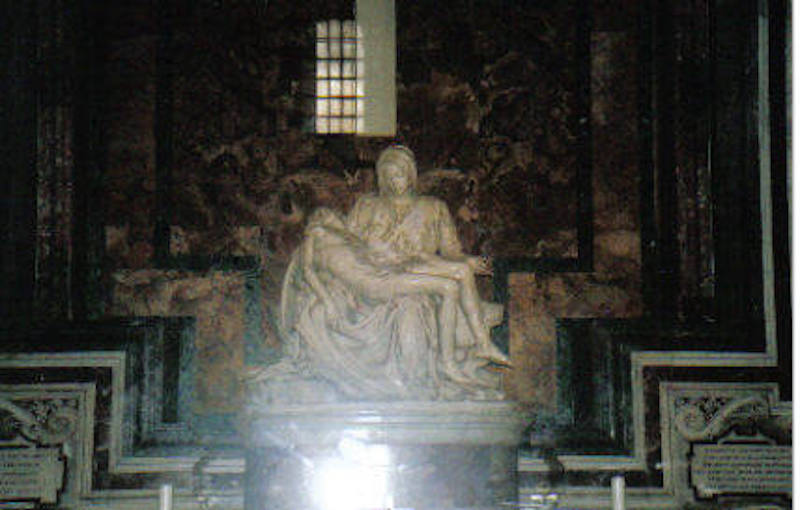
Just inside St. Peter's Basilica is the famous statue by Michelangelo called the Pieta, completed in 1498. The statue depicts Jesus being held in the arms of Mary after the crucifixion. The statue is now behind bullet proof glass as in 1972 a disturbed person attacked it with a hammer.
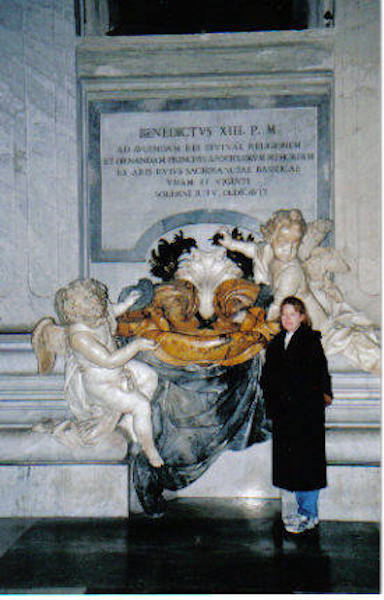
Another carving inside the Basilica, this time with Susan nearby. This is a good example of how multiple shades of stone were used in creating a unique piece of art.

Inside the Basilica is a large nativity scene. Our trip to Rome was a few weeks after Christmas, so I am not sure if this scene is always in the church or was just there due to the timing of our visit.
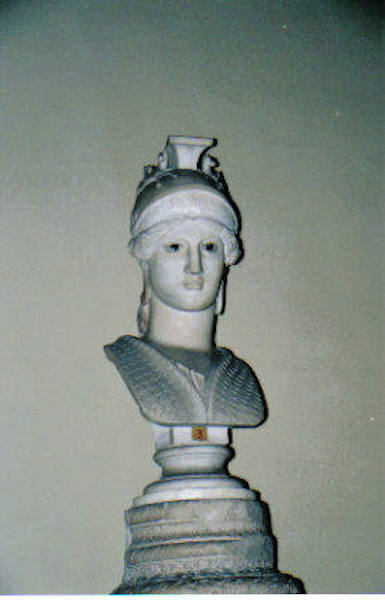
Inside the Vatican museum are hundreds of pieces of art many going back to ancient times. This one is of special interest as you can see the colored eyes of the Roman goddess in the statue. Most ancient statues do not have any color anymore, however the common practice in both Greece and Rome was to paint their statues, as you would expect after 2000 years of wear little paint still exists on the statues.
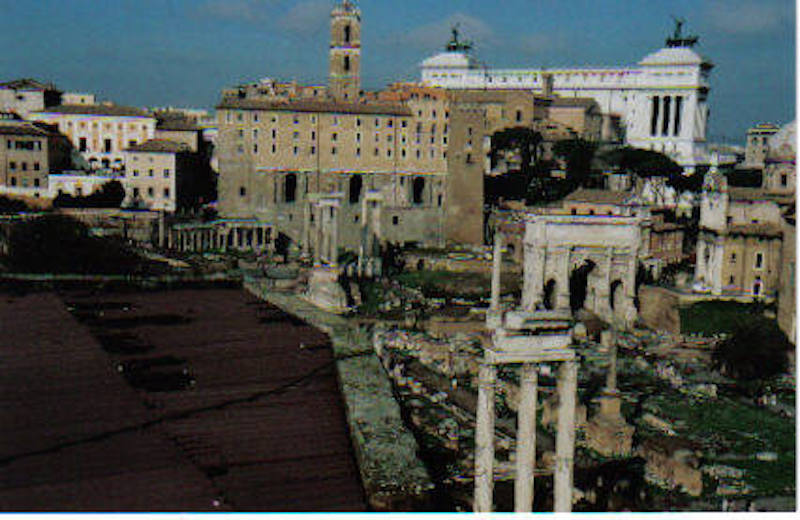
A partial view of the Roman Forum from a nearby hill. From this picture you can begin to get an idea of the number of ruins that are still standing, close to 2000 years after their initial construction.
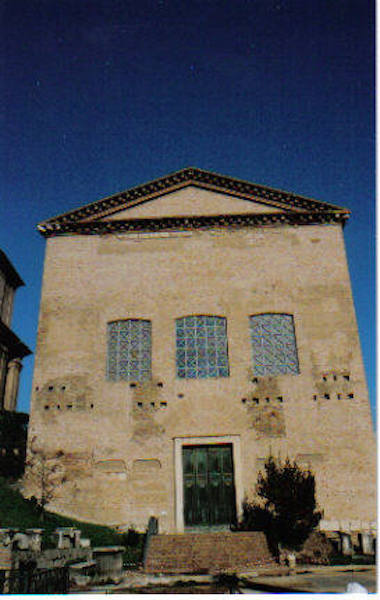
Inside the Roman Forum is a large brick building called the Curia. which was the meeting place for the Roman Senate, completed in 29 BC. The interior covered an area of close to 5500 square feet and the ceiling was roughly 70 feet high. Approximately 300 senators would be in the building when sessions were held.
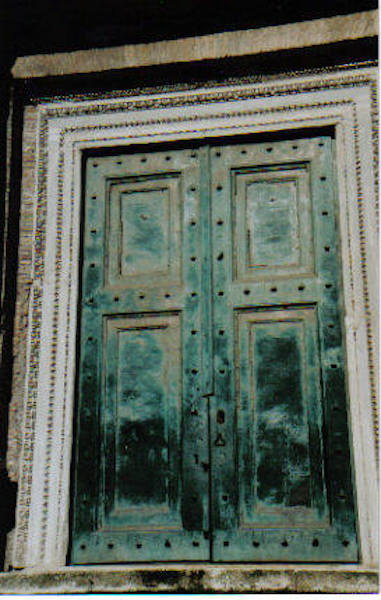
Another building inside the Roman Forum is the Temple of Romulus. Especially of note are the massive doors, still swinging on the same hinges they were mounted on in AD 306.
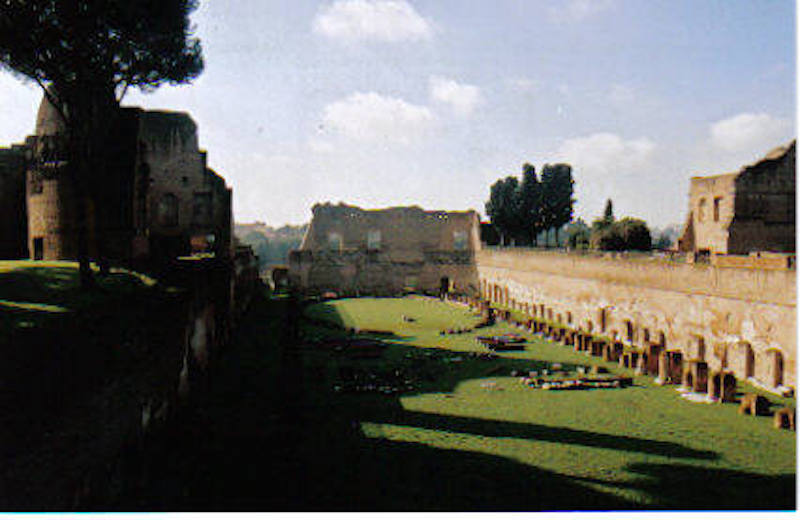
Next to the Palace of Domitian on Palatine hill was a large stadium (approximately 500 yards long) suitable for chariot races. The stadium was bounded by a 2 story wall and at one end was a stand where the emperor would watch the races.